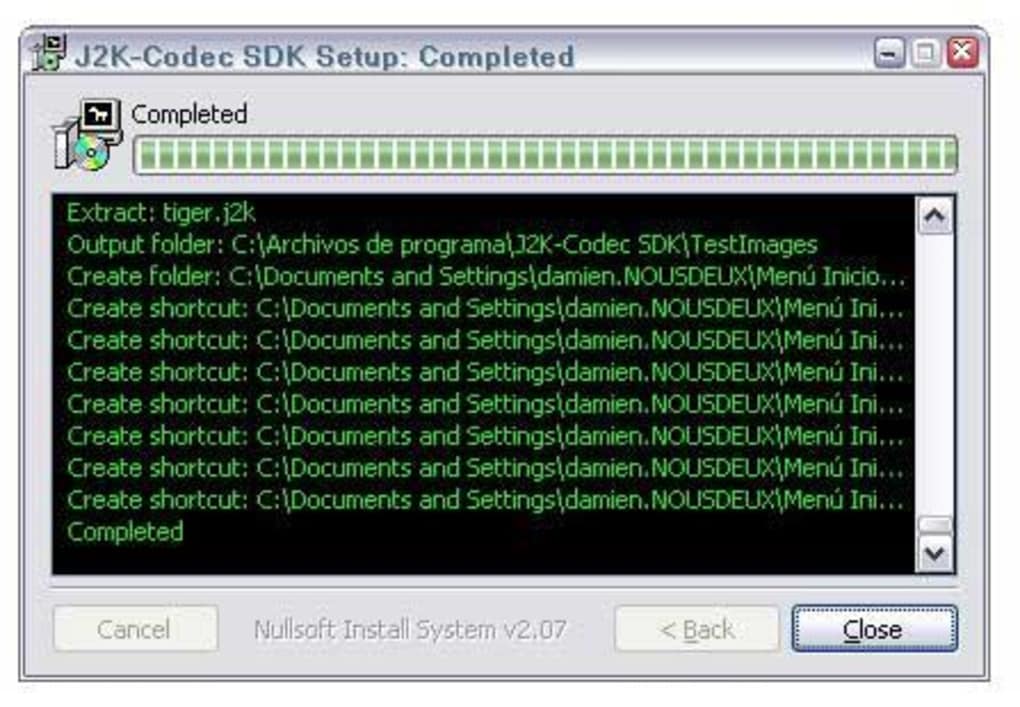
- #J2k format for cinema software#
- #J2k format for cinema code#
- #J2k format for cinema professional#
- #J2k format for cinema free#
Unless you specifically managed the colour workflow of your project to have a rec709 export, you should keep it on sRGB.īy selecting “XYZ Conversion” we will convert the sRGB TIFF files into XYZ JPEG2000 files. This is dependent on your specific video file. Under “Image Parameters” we need to select the source colour as either sRGB or rec709. For a 2K project such as ours 125mb/s is more than enough. A higher value doesn’t always mean higher quality. The frame rate is used to calculate image size and does not affect your conversion, in my case it was 25.īandwidth refers to the overall bit rate of your JPEG2000 image sequence. The Profile must be set to Cinema 2K to match our resolution. Unless you have another JPEG encoder installed, leave this selected. The first tab on OpenDCP creates JPEG2000 in xyz colour space and contains various settings to adjust different inputs and the type of DCP you want to make. Next, click on “Options” next to “Image Sequence” Thus we’ll first export a TIFF sequence, and convert them to JPEG2000’s in XYZ colour space later. I’ve mentioned above that DCP uses JPEG2000, however, we can’t export them yet because they have to be in XYZ colour space. The last step is to select the format at the top. I’ve deselected “Interlaced Scaling” because my video is progressive. Sound can be set to “No” since image sequences don’t carry sound. Make sure that you have selected to crop “SOURCE”. Rather comment below and I’ll provide you with the correct crop factor) (If you are not using an HD 1920×1080 file, your crop factor will be different. If you are exporting a 2048 x 858 DCP, crop the top and bottom by 147 pixels. Referencing the diagram above, set the crop to 39 pixels above and below if you are exporting a 1998×1080 DCP. Next we want to crop the image to maintain the aspect ratio, if we don’t, MPEG streamclip will stretch your film to fit the new resolution. Let’s set the resolution, (frame size) first. The image below illustrates how HD fits into the DCP dimensions: Then we have to convert it into a tiff sequence. We have to re-size this to either fit into 1998×1080 or 2048×858 resolution. I’ll start by assuming you have a Master Export in 1920×1080 resolution with Stereo sound. The minimum requirements for admission to the academy awards are the same as above with the exception that it has to be 24fps and Audio must either be 3 channel (Left, Centre, Right) or 5.1 Stereo / 5.1 separate WAVE Mono files 48kHz, 24bit unencrypted PCM. Let’s start by looking at what specs SterKinekor requires the DCP to be delivered. If this is the case, the workflow below will work perfectly for you. For many editors this is not possible either their source footage is only HD, which is very common for documentary projects and lower budget productions.
#J2k format for cinema professional#
Thus if you are following a professional online-edit and colour-correction workflow, you should export to DCP directly from your online package. The DCP format can store much more colour information than a Prores 422 file, and since the resolution is larger some scaling will occur. It has to be said that creating a DCP using a HD file is not ideal.
#J2k format for cinema software#
The software we will be using is MPEGStremclip and OpenDCP. The Ster Kinekor Cinema’s have recently upgraded all their projectors to “ Christie Solaria One“.
#J2k format for cinema free#
Write a digital Cinema 4K profile compliant codestream: magick wizard.png -resize 4096x2160! -depth 12 wizard.This article demonstrates a fast and effective way to create a DCP (Digital Cinema package) that meets the requirements for screening in Ster Kinekor cinema’s in South Africa, using only a 1920×1080 Prores or equivalent Export and free software. Save a tiled JPEG-2000 image: magick wizard.png 'wizard.png' Specify a subsampling factor: magick wizard.png -colorspace YUV -sampling-factor 2,2 wizard.jp2 Here we extract an area from the image: magick 'wizard.jp2' wizard.pngĮxtract a particular tile from the image: magick 'wizard.jp2' wizard.png

Let's convert a JPEG image to a lossless JPEG-2000 image: magick wizard.jpg -quality 0 wizard.jp2 Use this command to convert a JPEG-2000 image to the PNG image format: magick wizard.jp2 wizard.png
#J2k format for cinema code#
code blocks are 64 samples in width and 32 samples in height.As an example, suppose you are interested in these options: ImageMagick's JPEG-2000 image formats, JP2 and JPC, accept a plethora of encoding options as detailed below.


 0 kommentar(er)
0 kommentar(er)
